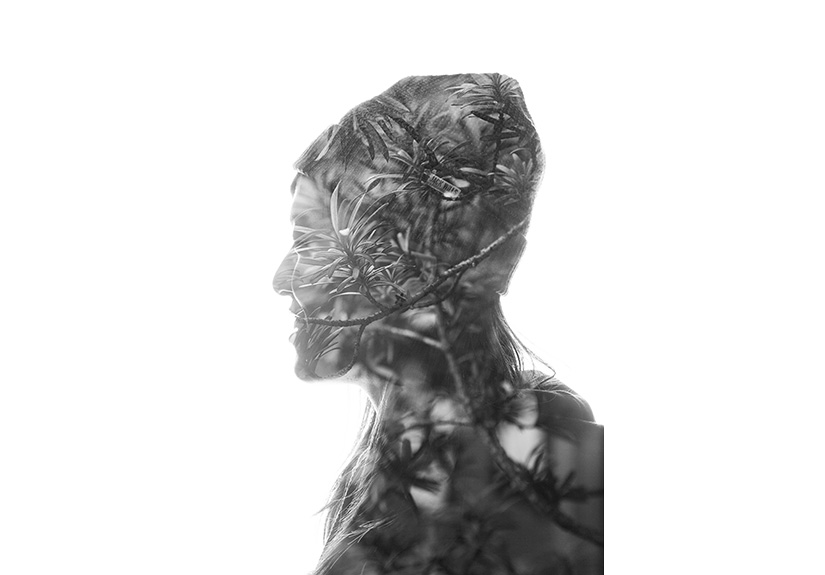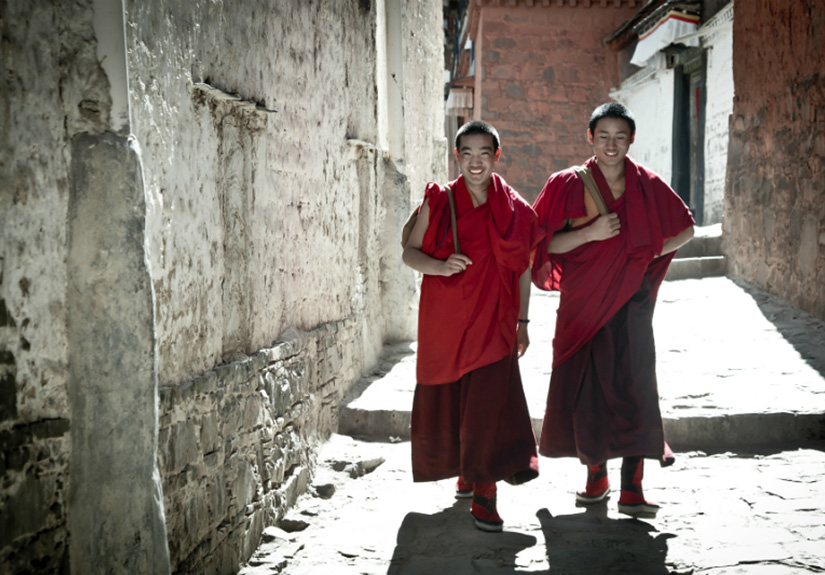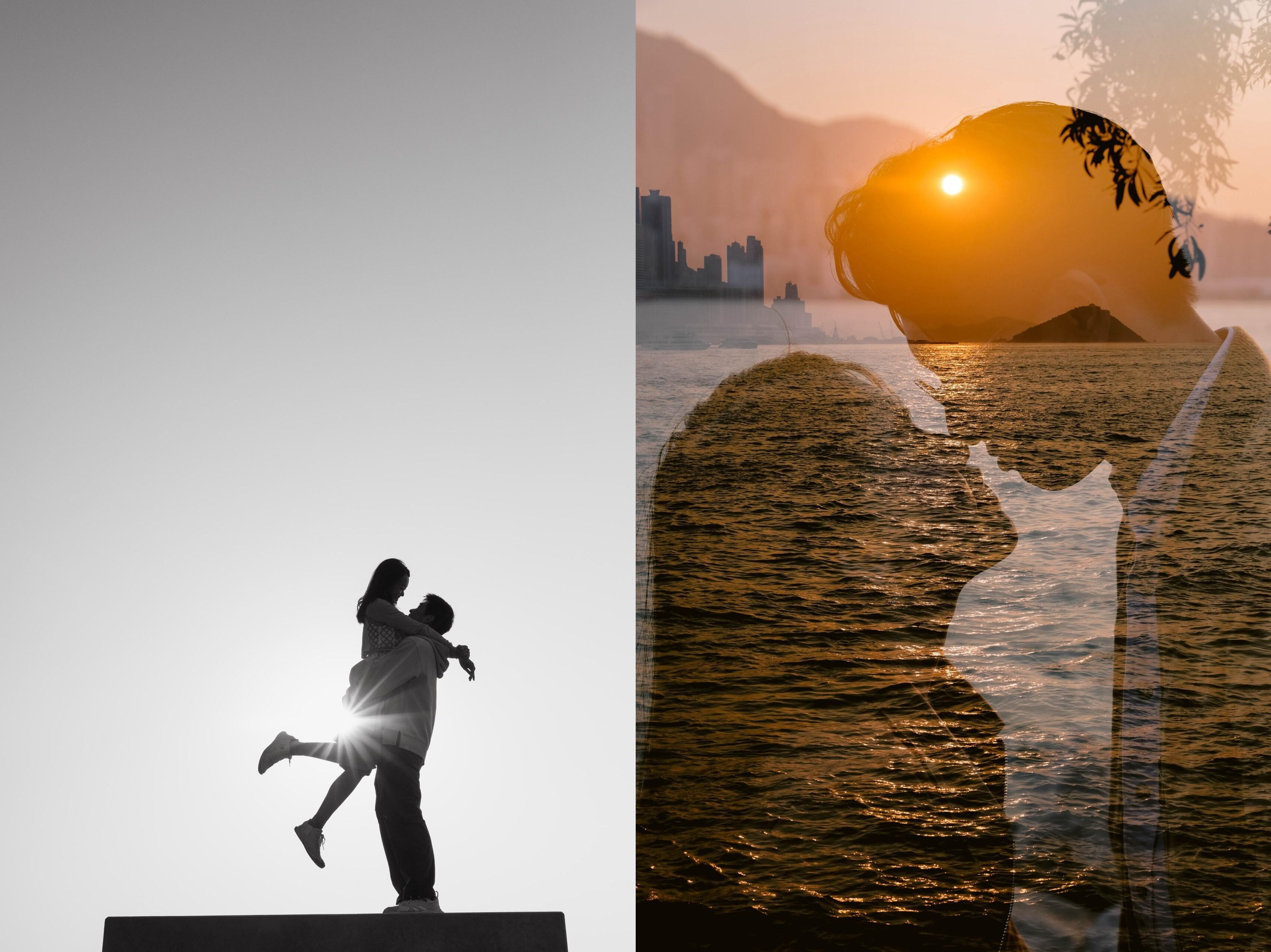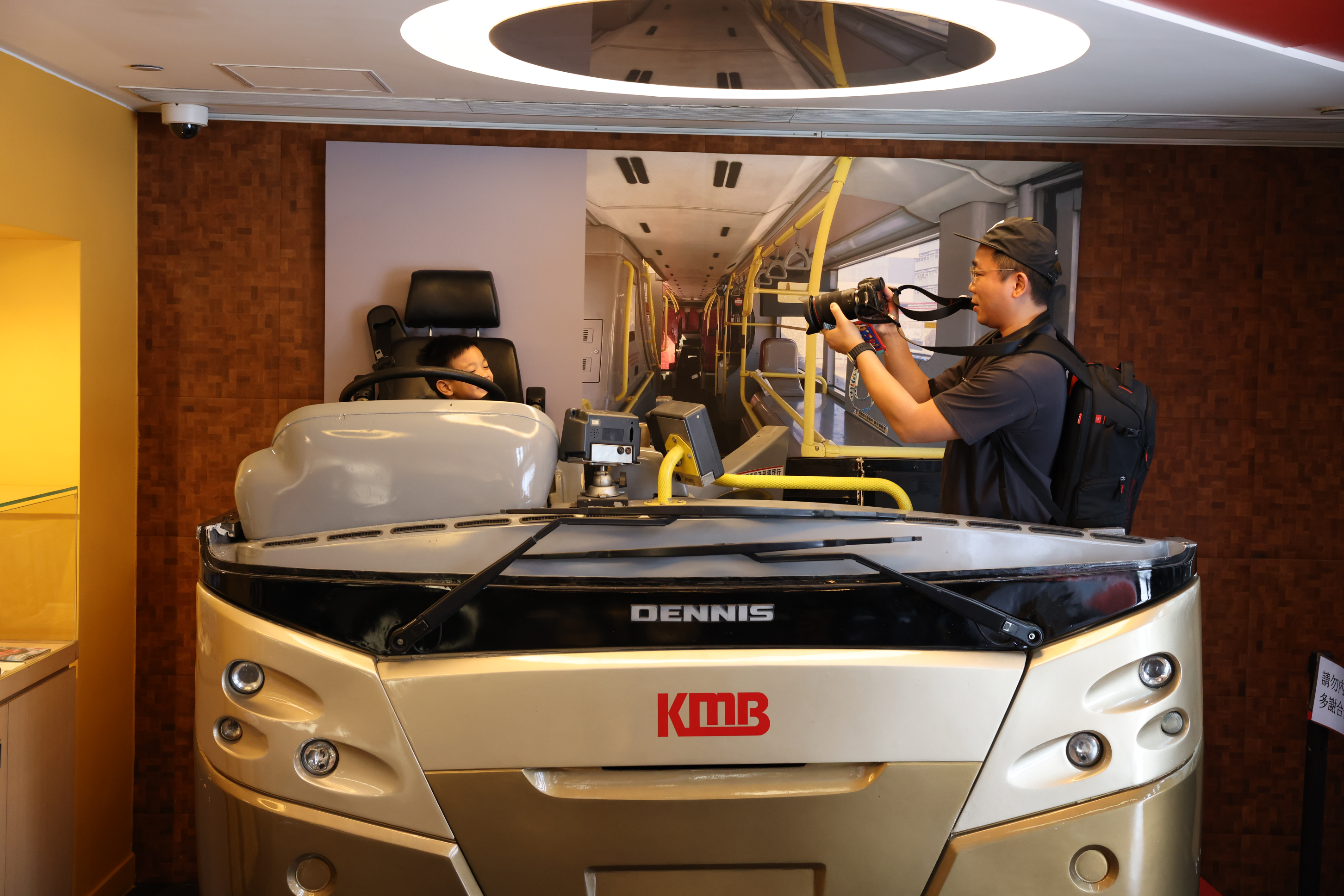Capture Exotic Portraits
Most Hong Kong people love traveling. It is a way to getaway from the busy life, relax yourself and take really beautiful pictures. In fact, it is not just the exotic landscape that attracts our eyes, the people we meet on the journey is full of charm too. These encounters can be unexpected and short, so it takes skills and techniques to photograph people well when you travel.
Equipment
Theoretically, different focal lengths can be used to capture portraits. But if we want to travel light, we can consider bringing only one prime lens, such as EF 24mm f/1.4L II USM. Its ultra-large aperture and wide focal length help take portraits outdoor, capable of including the landscape in the composition while producing out-of-focus background to separate the subject.

This exotic photo captured the moment the kids smiled happily with a white snow land as background.
Title : 《在兒時也擁有過的快樂》 Club Canon member : Kpoo Kwok
EOS 5D Mark II • EF 24mm f/1.4L II USM • f/1.4 • 1/8000s • ISO 100
Title : 《在兒時也擁有過的快樂》 Club Canon member : Kpoo Kwok
EOS 5D Mark II • EF 24mm f/1.4L II USM • f/1.4 • 1/8000s • ISO 100
Besides, a telephoto zoom lens can offer you a flexible telephoto zoom range for close-up shots as well as capturing landscape and people from a distance, creating unobtrusive shots without the subject feeling uneasy. Featuring a fixed large aperture and high-speed USM autofocusing, EF 70-200mm f/2.8L IS II USM can help capture a split moment in time.

Taken with a telephoto zoom lens, this interesting and special shot captured an image that looked like a street performer practicing hard behind the scenes.
Title : 《晨光下與蛇共舞》 Club Canon member : Iris Ng
EOS 5D Mark II • EF 70-200mm f/2.8L IS II USM • f/5.6 • 1/640s • ISO 640
Title : 《晨光下與蛇共舞》 Club Canon member : Iris Ng
EOS 5D Mark II • EF 70-200mm f/2.8L IS II USM • f/5.6 • 1/640s • ISO 640
The Trio Steps of Shooting
1. Know the place you visit
A commonly used tactic in travel portrait shooting is to capture images that show the relationship of the people and environment. We can observe whether the place around can show any local characteristics, or if the environment can reflect the lives of the local people, and include these elements in the composition to enrich the photo’s content.
Do some research before departure if you want to capture ethnic festivals or celebrations. For example, the Kyoto Geisha Festival held every May is a good occasion to take photos of the Geisha in traditional make-up and kimono. Other ethnic festivals such as Miao’s Guzang Festival, Tibet’s Dagma Festival, Yi’s Torch Festival and Mongolia’s Naadam Festival are also good occasions to take distinctive portraits of people in local costumes taking part in various kinds of special celebration and performance.
Do some research before departure if you want to capture ethnic festivals or celebrations. For example, the Kyoto Geisha Festival held every May is a good occasion to take photos of the Geisha in traditional make-up and kimono. Other ethnic festivals such as Miao’s Guzang Festival, Tibet’s Dagma Festival, Yi’s Torch Festival and Mongolia’s Naadam Festival are also good occasions to take distinctive portraits of people in local costumes taking part in various kinds of special celebration and performance.

The festivals, customs and traditional costumes are different from countries to countries. This photo, for example, captured the traditional make-up of Geisha in Japan.
Title : 《藝妓》 Club Canon member : ALEX
Canon EOS 5D Mark II • EF 70-200mm f/4L IS USM • 1/500s • f/5.0 • ISO 320
Title : 《藝妓》 Club Canon member : ALEX
Canon EOS 5D Mark II • EF 70-200mm f/4L IS USM • 1/500s • f/5.0 • ISO 320
2. Adapt to the environment
Skills of communications
The most difficult thing to photograph strangers is how to communicate, especially when you are in a place speaking different languages. There are many ways to overcome language barriers though. Learn the basic greetings and phrases of courtesy can help, and most people will be willing to let you photograph if you approach them nicely. Apart from language, sometimes making an eye contact or a smile is sufficient. However, you need to be careful when traveling to countries with rich religious heritage.
Use of lighting
Lighting plays an important role in enhancing the mood for your travel portraits. In general, backlighting can add depth and emotions to the photos, while side lighting can add a sense of mystery to your subjects. Besides, special lighting in some occasions like fireworks and neon lights can enhance the overall atmosphere. When shooting in dim environment, we can use a higher ISO setting to capture the scene in a natural setting and retain its real texture.
The most difficult thing to photograph strangers is how to communicate, especially when you are in a place speaking different languages. There are many ways to overcome language barriers though. Learn the basic greetings and phrases of courtesy can help, and most people will be willing to let you photograph if you approach them nicely. Apart from language, sometimes making an eye contact or a smile is sufficient. However, you need to be careful when traveling to countries with rich religious heritage.
Use of lighting
Lighting plays an important role in enhancing the mood for your travel portraits. In general, backlighting can add depth and emotions to the photos, while side lighting can add a sense of mystery to your subjects. Besides, special lighting in some occasions like fireworks and neon lights can enhance the overall atmosphere. When shooting in dim environment, we can use a higher ISO setting to capture the scene in a natural setting and retain its real texture.

Title : 《印度母子》 Club Canon member : TSE PO ON
Canon EOS-1Ds Mark III • EF 70-200mm f/2.8L IS II USM • 1/1250s • f/2.8 • ISO400
Canon EOS-1Ds Mark III • EF 70-200mm f/2.8L IS II USM • 1/1250s • f/2.8 • ISO400
3. React quickly
Capture the expressions
The facial expression of a subject is key for capturing stunning travel portraits. To capture a good expression, we need to pay attention to all the happenings around us, and quickly frame a shot once an attractive subject is spotted. Normally a telephoto lens will be used to capture the natural expressions. For camera settings, as the subject may move around or have a swift change of expression in the face, we will need a faster safe shutter speed. When shooting at 200mm focal length, the shutter speed has to be at least 1/200s, or 1/400s to play safe.
The basic composition for travel portraits normally follows the Golden Ratio, i.e. positioning the subject to the left or right side in the frame. For subject with an impressive expression, we can do a close-up shot. Another way of composition is more like the one we use for landscape. The subject, occupying only a small proportion in the composition and positioned in the corner, will be a nice touch up for the environment.
The facial expression of a subject is key for capturing stunning travel portraits. To capture a good expression, we need to pay attention to all the happenings around us, and quickly frame a shot once an attractive subject is spotted. Normally a telephoto lens will be used to capture the natural expressions. For camera settings, as the subject may move around or have a swift change of expression in the face, we will need a faster safe shutter speed. When shooting at 200mm focal length, the shutter speed has to be at least 1/200s, or 1/400s to play safe.
The basic composition for travel portraits normally follows the Golden Ratio, i.e. positioning the subject to the left or right side in the frame. For subject with an impressive expression, we can do a close-up shot. Another way of composition is more like the one we use for landscape. The subject, occupying only a small proportion in the composition and positioned in the corner, will be a nice touch up for the environment.

Title : 《漓江漁火》 Club Canon member : Tim Yeung
EOS 5D Mark III • EF 24-105mm f/4L IS USM • 1/125s • f/6.3 • ISO 1000
EOS 5D Mark III • EF 24-105mm f/4L IS USM • 1/125s • f/6.3 • ISO 1000
Make the subject stand out
We should opt for a clean and simple background when taking portraits and avoid getting unnecessary objects in the background such as rubbish bin and pedestrians. However, the chance to take a travel portrait comes and goes and we have to react quickly. When there is no time to adjust the composition, a large aperture can help to defocus the background and make the subject stand out. Besides, we can also make use of the compressed perspective of a telephoto lens to minimize the chance of getting a busy background.
We should opt for a clean and simple background when taking portraits and avoid getting unnecessary objects in the background such as rubbish bin and pedestrians. However, the chance to take a travel portrait comes and goes and we have to react quickly. When there is no time to adjust the composition, a large aperture can help to defocus the background and make the subject stand out. Besides, we can also make use of the compressed perspective of a telephoto lens to minimize the chance of getting a busy background.

With a large aperture and long focal length, we can achieve an out-of-focus background that helps outstand the devout expression of the subject.
Title : 《Worship》 Club Canon member : HIMMIE
Canon EOS 6D • EF 70-200mm f/2.8L USM • 1/200s • f/2.8 • ISO 400
Title : 《Worship》 Club Canon member : HIMMIE
Canon EOS 6D • EF 70-200mm f/2.8L USM • 1/200s • f/2.8 • ISO 400




